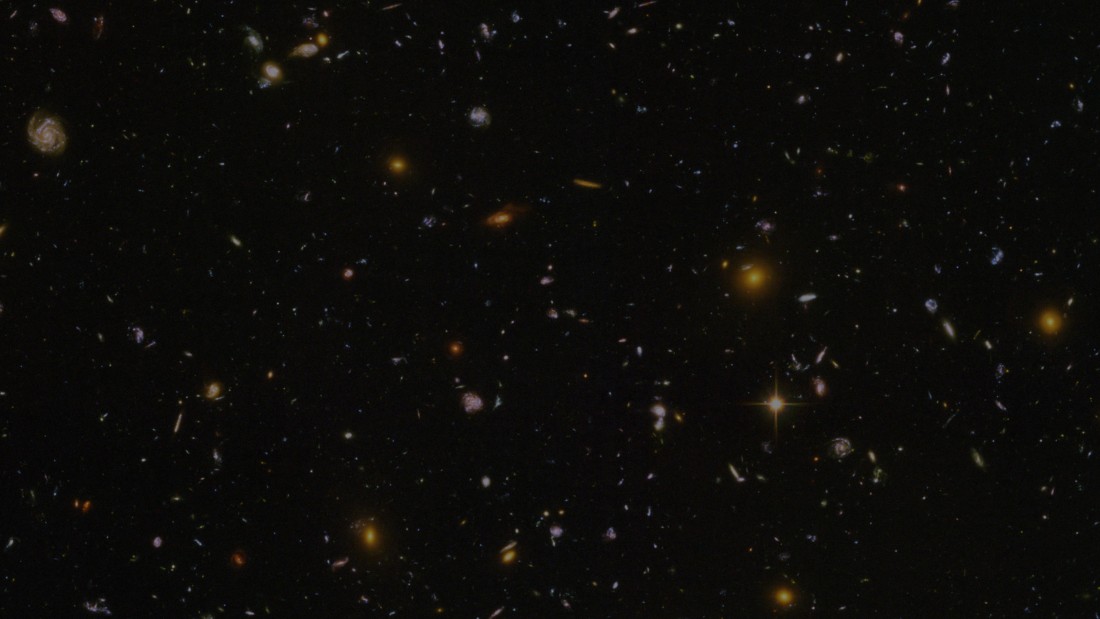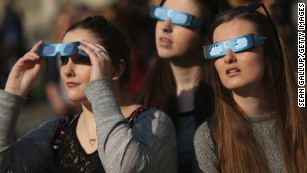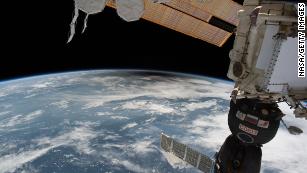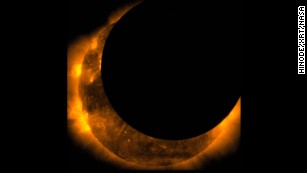
A partial solar eclipse happens this weekend over Asia
(CNN)A partial solar eclipse will help kick off the new year Sunday as the moon passes between Earth and the sun. But visibility depends on where you live -- and clear skies, of course.
The partial solar eclipse will be visible after sunrise in Asia in China, in North and South Korea, in Japan, in Russia and over the North Pacific Ocean and the Aleutian Islands, including a tiny portion of Alaska before sunset.
Find out what time to see it in these areas on Time and Date. Sky & Telescope predicts that people will see 20% of the sun covered from Beijing, 30% from Tokyo and 37% from Vladivostok, Russia.
Due to the timing of the eclipse, those in the United States and Europe will miss out.
Sponsor content by twofour54
The creative ecosystem that supports storytellers
In a competitive world that demands new content, you have to be in the right place to capture the moments that matter.
If you're going to be in a part of the world where you can see the partial eclipse, please view responsibly -- and do NOT look at the sun directly.
Any glimpse of the sun's brightness is not only uncomfortable, it's dangerous. Looking directly at the powerful brightness of the sun can cause damage to the retina, the light-sensitive part of the eye.
The retina may translate light into an electrical impulse that the brain understands, but one thing it can't translate to your brain is pain. So even if you're excited about the eclipse and think one brief glimpse of the sun before it hides behind the moon is worth it -- it's not. There's no internal trigger that is going to let you know that you've looked at the sun for too long. Any amount of looking at it is too long.
Even the smallest amount of exposure can cause blurry vision or temporary blindness. The problem is, you won't know whether it's temporary.
No matter how cute or fancy they may be, wearing your favorite pair of sunglasses -- or a whole stack of sunglasses, for any MacGyver wannabes out there -- won't help. You'll need eclipse glasses, which are regulated by an international safety standard.
Still don't believe it? The total solar eclipse in 2017 caused eclipse-shaped eye damage in a woman who viewed it without eclipse glasses. So please, read the tips so you can enjoy the eclipse without worrying about going blind.
Other reasons to look up this year
This is not to be confused with another spectacular event happening this month: the super blood wolf moon.
Between January 20 and 21, a rare super blood moon total lunar eclipse will be visible in North and South America as well as western areas in Europe and Africa, and a partial lunar eclipse will be visible in central and eastern Africa, Europe and Asia.
And a total solar eclipse will delight those in Chile, Argentina and parts of the South Pacific in July.
Though there were three partial solar eclipses in 2018, the main focus was on the blood moon lunar eclipse in July, the longest total lunar eclipse of the century. And of course the year before that featured the "eclipse of the century," when a total solar eclipse covered the entire United States in August 2017.
If you weren't able to see one of the most anticipated and unifying events this country has witnessed in nearly a hundred years, don't worry. You won't have to wait an entire century until the next one -- just five years. Another total solar eclipse will be visible in the United States on April 8, 2024.
Traveling a different path from the 2017 eclipse, the next one will be visible in Mexico, the central US and eastern Canada, with a partial eclipse visible across North and Central America.


















No comments:
Post a Comment